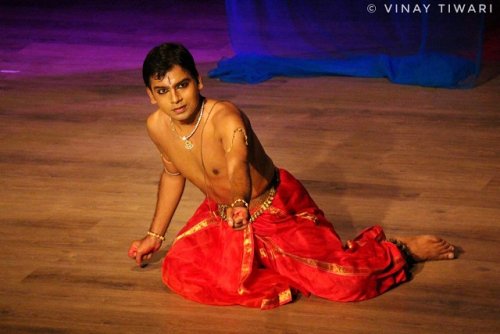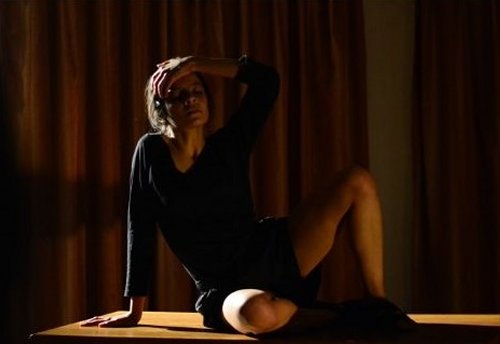
|   |

|   |
Drishtikon's Baithak series - Kasturika Mishra e-mail: kasturika69@gmail.com June 5, 2019 Providence was never out of fashion. Then in Puranic times and even now in modern era of section 377 being accepted so widely in India. On May 24, Himanshu Srivastava presented this dichotomy vividly in his short piece on Shikhandi as the central character, in Bharatanatyam style, the dance form of Bharata and from Mahabharata, the iconic epic of India. What strikes the audience is the lovely interplay of fluid emotions, once diabolical and in another frame soothing. Himanshu mellowed down the grammar of Bharatanatyam and enhanced the theatrics of the dance form which has long traditions of basing the performances on local fables and lives of deities. Shikhandi is reminded of the deprivation in last life of being re-accepted by his chosen groom after being abducted by the heroic Bhishma Pitamaha of Mahabharata. Krishna the doer, asks Shikhandi to lead and take revenge on the plight in his last life and in present and the performance goes in flashback on the syllable "smara." True to any thoughts of Hindu pantheon, we see Shikhandi being pampered as a girl child and being abhorred as a grown up boy wondering what’s wrong with his emotions and his body. Driven by the thought on whom he should blame, he decides to end his life. The attempt at suicide and his final resolve was a very effective scene. Kudos to Himanshu. No doubt, the use of sandhi prakash ragas like Charukesi, Multani and Suddha Sarang and the moorchanas in war games were an added beauty. Bharatanatyam is changing grammar to being simplistic and rasika friendly, thanks to these young dancers.  Himanshu Srivastava; Photo: Vinay Tiwari  Urvi Arora In complete sense an opposite, the next performance for the evening at the Oddbird Theatre under Drishtikon Baithak series curated by Aditi Mangaldas was set on interactive card playing and participation by audience. The context of role playing and gestural positioning from chapters of Kamasutra was presented by Urvi Arora. It was a dragging presentation with detailed pauses and too much emphasis on involving audience. The classical text is the platform of many beautiful dance ensembles in almost all dance forms in India and such trivialization was not desired. Yes, in modern times the literature of Kamasutra times might sound at odds but nevertheless it deserves much more attention than mere comic guffaws. Young dancers should lend some new blood and influx more research into the validity of texts they use as props in their creative works. Nevertheless, it makes the baithak a different dance space. Kasturika Mishra is a Cataloging Library Specialist, music and dance critic, blogger at Mihika Mishra on facebook. |